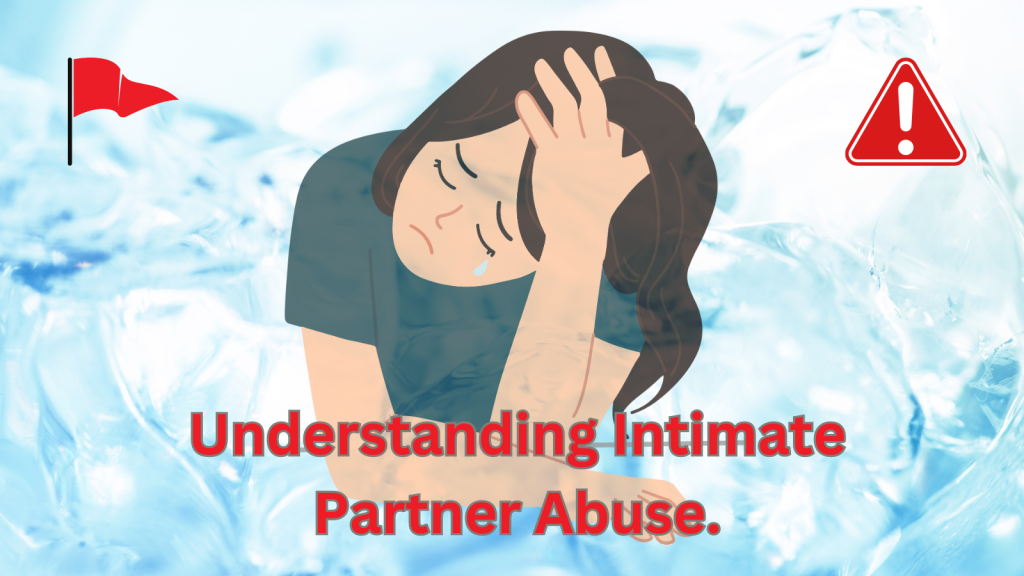Understanding Intimate Partner Abuse.

Today I am writing about a subject that many people do not usually read about until the headlines in the media declare another senseless loss of life. So today I am covering the definitions of gender violence and domestic abuse from the Spanish perspective and looking at some of the tools that determine the risk of loss of life that are being used in the UK.
In 2023, At least 100 UK women and girls aged 13 and over have been killed in circumstances in which a man or men are primary suspects. Dr. Karen Ingla Smith started counting dead women in 2012 she has a Twitter account @countdeadwomen
Every week in the UK between four and ten women who have experienced domestic violence kill themselves. Suicide is another aspect of how domestic violence impacts society.
The biggest toll is the physical, emotional, psychological and financial impact on women who have suffered any form of domestic abuse or violence. Many live with the consequences of trauma and anxiety for years. CPTS and PTS. Complex and Post Traumatic Stress. I have dropped the usual D from the acronym as I do not consider post-traumatic stress in the circumstances of domestic violence to be a disorder. As well as the increased risk of physical illness, heart disease and cancer from the stress of their experiences and situations.
In Spain “gender-based violence” is violence suffered by women in the context of intimate partner/ex-partner violence. Domestic violence is aggression toward women from a man against a woman within the family. Siblings, Male relatives, ascendants, and descendants.
– Physical violence:
Is causing or attempting to cause harm to a woman by hitting, kicking, burning, grabbing, pinching, pushing, slapping, pulling hair, biting, denying medical care, forcing alcohol or drugs, or using any other type of physical force against her. It may include damage to property and personal belongings.
– Psychological violence
Consists of acts aimed at controlling or manipulating a woman, isolating her from friends, family, school or work, humiliating or shaming her, or instilling fear in her. It includes threatening, blaming, constant surveillance, demands for obedience or submission, indifference or neglect.
– Economic / Financial Abuse
Involves making or attempting to make another person financially dependent by maintaining total control over their financial resources (rent, goods, property) Preventing them from accessing them freely. It can include both prohibition of work or training and labour exploitation. Physical violence, psychological violence, online violence or all of them can be used to achieve this. In the UK Economic abuse has been more clearly defined and the Organisation Surviving Economic Abuse SEA has campaigned for changes in legislation with the help of women with lived experience.
Sexual violence
Sexual violence is considered to be acts of a sexual nature that are not consensual.
Abuse, assault, stalking, harassment, grooming, revenge porn, sextortion or blackmail, and rape.
Institutional violence
Public authorities have a responsibility and requirement for the prevention and punishment of perpetrators of violence against women. They also must protect women against violations of their basic human rights – concerning any type of male violence. Secondary victimisation – for any of the expressions of male violence – is a manifest concern and is specifically so in the Istanbul Convention (Articles 15 and 18).
Article 15 – Training of professionals. Multi-agency cooperation and training for the appropriate handling of referrals of violence against women.
Article 18 – General obligations. The duty of care is to protect all victims from any further acts of violence. Provide for effective cooperation between all relevant public agencies, including the judiciary, public prosecutors, law enforcement agencies, local and regional authorities as well as non‐governmental organisations and other relevant organisations and entities, in protecting and supporting victims and witnesses of all forms of violence.
Important to note here.
A victim’s access to services should not be dependent on the need to press charges or testify against any perpetrator.
Awareness-raising.
Awareness raising and prevention and detection are key in the fight against male violence. As is the training of professionals so they understand the complexity of Gender Violence and Domestic Abuse. Below are two resources that are informing professionals and also as a warning to potential victims or women who are experiencing some form of domestic abuse in current relationships.
Risk assessment questions
The Domestic Abuse, Stalking and Honour Based Violence (DASH 2009-2024)
This resource has been created to assist professionals in asking a set of questions that help them to determine the risk of the victim. It was implemented across all Police forces in the UK from March 2009. Some of the questions focus on coercive control and stalking within the area of domestic situations. The resource is now recognised as a multi-agency tool.
You can discover more at the Dash Risk Checklist website.
Eight Stage Homicide Timeline –
Dr Jane Monkton Smith author of In Control: Dangerous Relationships and How They End In Murder
has identified an 8-stage homicide timeline which consists of:
1) a history of control and stalking, – a red flag is that they are controlling and have been controlling before.
2) the commitment whirlwind, – things move very quickly to a proposal and marriage or moving in together.
3) Living with control, – manipulation, entrapment, financial dependence, and isolation this might even be a move away from your local area. Hidden forms of abuse, psychological, sexual, and financial control.
4) Trigger, – a change that is happening that impacts the controlling person. Financial struggles, children moving on, looming retirement.
5) Escalation, – Stalking in person or online by a former spouse or partner. Where there has been coercive control they may seek to punish or cause hurt. The Courts become the playground. The controller (ab)uses the legal system. They want to win at all costs and there will be no compromise.
6) A change in thinking, – When the trigger has been separation the controlling person begins to think about how the victim must be destroyed.
7) Planning, and finally – The person puts together a murder kit.
8)Homicide and/or suicide. The perpetrator plans murder or the victim gives up and takes their own life.
Lived Experience
Those with lived experience must be given a voice without fear of repercussions. Informing a victim that it is “innocent until proven guilty” when they speak out about their experience is not helpful at all. The lack of support for victims to report the situation of Gender Violence when initial legal advice is sought needs to be addressed. The lack of knowledge of rights and remedies and the difficulties for victims/survivors to access them harm the recovery of women who have suffered some form of male violence.
For women who are survivors of male violence in certain situations of gender-based violence, the lack of financial security makes them increasingly vulnerable. The aggressor focuses his harm in causing the victim to become ensnared or trapped into the relationship. This can play out in many ways, usually the victim does not see how they become susceptible. The victim ends up being wholly dependant on the aggressor himself. This can lead to social isolation, preventing her from working outside the home, depriving her of access to money for her expenses and/or distancing her from decisions in the family finances. This situation exposes the victim to a loss of self-esteem, financial insecurity and helplessness and can end up being a huge barrier to leaving the violent relationship. As well as economic dependence homelessness is another element of the fear of leaving when self-esteem and access to a stable source of income are not available as in the case of many migrant women.
Reparation
Individual and comprehensive reparation of harm.
This is possibly the least known issue in the fight against male violence.
The damage results in many types of consequences. These can be multiple physical, psychological, economic, social and symbolic forms of harm. Reparation can be varied and falls into five types: restitution, compensation, rehabilitation, satisfaction and guarantees of non-repetition.
I believe the reality of the situation for many women is significantly below what is considered to be useful. I regularly participate in groups where people have experienced many forms of domestic abuse and domestic violence and most women have not sought any form of Justice. Many are still traumatised by their experience ten years post-separation. Many recount their experiences and this is helpful for other women who are in the groups as they are given validation of the experiences they went through.
Resources
State Strategy to Combat Male Violence 2022– 2025 (EEVM) PDF
Dash Check List
In Control: Dangerous Relationships and How They End In Murder – Dr Jane Monkton Smith author
Council Of Europe 2011 PDF
Counting Dead Women
Dr Karen Inglas Smith
Surviving Economic Abuse

